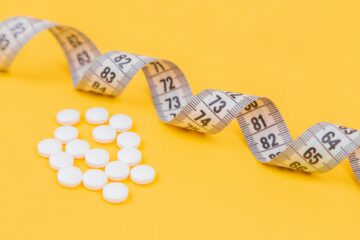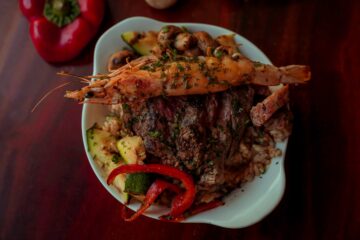A diabetes diet does not have to be difficult, and you do not have to give up all of your favorite foods. The first step towards making better choices is to separate the misconceptions from the realities about eating to avoid or control diabetes.
So, What’s Diabetes?
Diabetes is a lifestyle illness characterized by abnormally high blood glucose or blood sugar levels. Symptoms of the disorder include increased thirst, urination, hunger, weariness, hazy eyesight, and unexplained weight loss. The condition and its symptoms, however, can be managed by adhering to a carefully thought-out diabetic diet.
Diabetes is classified into two types: type 1 and type 2. The former is more common in children, and the pancreas does not produce insulin in this scenario. The latter is regarded as the milder form, with the pancreas producing some insulin, but typically insufficient amounts.
Whether you’re trying to avoid or control diabetes, your nutritional needs are basically the same as everyone else’s, so no special foods are required. However, you do need to be mindful of certain of your dietary decisions, particularly the amount of carbohydrates you consume. While adopting a Mediterranean or other heart-healthy diet can help with this, losing a little weight is the most crucial thing you can do.
Your cholesterol, blood pressure, and blood sugar levels can all be reduced with just a 5% to 10% weight loss. Losing weight and eating healthy can also improve your mood, energy, and overall sense of well-being. Diabetes increases a person’s risk of having depression and other mental health problems, and it nearly doubles their risk of developing heart disease.
What is a Good Diabetes Diet?
A smart diabetes diet is very similar to the healthy eating strategy that doctors advise for everyone: Lean protein, healthy fats, fiber-rich fruits and vegetables, complete, minimally processed foods, and a limit on refined grains and added sugars are all included in this diet.
You can control diabetes by adopting a variety of healthy eating habits, such as Mediterranean, low-carb, DASH, paleo, and vegetarian diets.
Determine the ideal eating strategy and the appropriate macronutrient ratio for your needs in terms of goals and dangers to your health by working with your healthcare team.
Diabetes Diet Should Include the Following Foods:
Whole Grains:
Compared to refined white grains, whole grains have higher levels of fiber and more minerals.
People with diabetes should consume a diet high in fiber because fiber slows the digestive process. Nutrients are absorbed more slowly, which helps maintain steady blood sugar levels.
Include the following whole grains in your diet:
- brown rice
- whole grain bread
- whole grain pasta
- buckwheat
- bulgur
- rye
Fatty Fish:
Adding fatty fish to your diet is a good idea. The omega-3 fatty acids eicosapentaenoic acid and docosahexaenoic acid are present in significant amounts. These are also referred to as EPA and DHA at times.
A diet rich in polyunsaturated and monounsaturated fats can help diabetics better control their blood lipid levels and blood sugar levels. Good sources of fatty fish are:
- salmon
- mackerel
- sardines
- albacore tuna
- herring
- trout
Citrus Fruits:
These fruits can be a fantastic source of vitamins and minerals without any added sugar. Citrus fruits including oranges, grapefruits, and lemons have also been found in studies to be advantageous for diabetics.
Walnuts:
Nuts are yet another fantastic food to include in your diet. Nuts, like fish, have fatty acids that support heart health.
Alpha-lipoic acid, a form of omega-3, is particularly abundant in walnuts (ALA). The health of the heart depends on ALA, just as other omega-3s. Consuming these fatty acids is crucial since people with diabetes may be more susceptible to heart disease or stroke (American Diabetes Association)
Beans:
Beans are a fantastic food choice for diabetics. They are a source of plant-based protein that can satiate hunger while also assisting people in reducing their carbohydrate intake.
Beans are better for controlling blood sugar than many other starchy foods since they have a low glycemic index (GI) rating.
Sweet Potatoes:
On the GI scale, sweet potatoes score lower than white potatoes. Because they release sugar more gradually and do not significantly elevate blood sugar levels, they are an excellent substitute for those with diabetes. Sweet potatoes are also high in the following nutrients:
- fiber
- potassium
- vitamin A
- vitamin C
Chia seeds:
They are frequently referred to as a superfood due to their high antioxidant and omega-3 content. Additionally, they are a good source of fiber and plant-based protein.
Chia seeds can be added to salads or breakfast dishes, used in baking, or let to thicken with water to create a pudding-like dessert.
Vegetables:
Vegetables with green, lush leaves are a great source of nutrients, vitamins, and minerals. Additionally, they little affect blood sugar levels.
One important plant-based supply of calcium, vitamin A, and potassium is found in leafy greens like spinach and kale. They also offer fiber and protein. Vegetables with green leaves include:
- spinach
- collard greens
- kale
- cabbage
- bok choy
- broccoli
Foods to Avoid:
If you have diabetes, you should avoid or restrict the following foods:
- Meat with a high-fat content (fatty cuts of pork, beef, lamb, poultry skin, dark meat chicken)
- full-fat dairy (whole milk, butter, cheese, sour cream)
- processed foods (chips, microwave popcorn, processed meat, convenience meals)
- Trans fat (vegetable shortening, fried foods, dairy-free coffee creamers, partially hydrogenated oil)
- Sweets (candy, cookies, baked goods, ice cream, desserts)
- Sweeteners (table sugar, brown sugar, honey, maple syrup, molasses)
- Beverages with added sugar (juice, soda, sweet tea, sports drinks)
One-Day Meal Prep:
Breakfast:
Vegetable omelet with fruit and reduced-fat cheese (made with 1 whole egg and 2 egg whites).
Snack:
Berries and plain, low-fat Greek yogurt.
Lunch:
A salad of leafy greens or dark lettuce with chickpeas, olive oil, and vinegar dressing.
Snack:
Sticks of celery and carrot with nut butter.
Dinner:
grilled salmon, vegetables, and quinoa.
To Sum Up:
While there appear to be many things to remember, the fundamental fundamentals reduce down to simple, good nutrition.
As you sit down to dine, you may filter out the noise by keeping the following in mind: “A well-balanced diet rich in entire plant-based foods, such as vegetables and fruit, coupled with lean meats, whole grains, and healthy, plant-based lipids” is what you should aim for.
Remember that, and you won’t need to follow a ton of rules – even if you have type 2 diabetes.






0 Comments